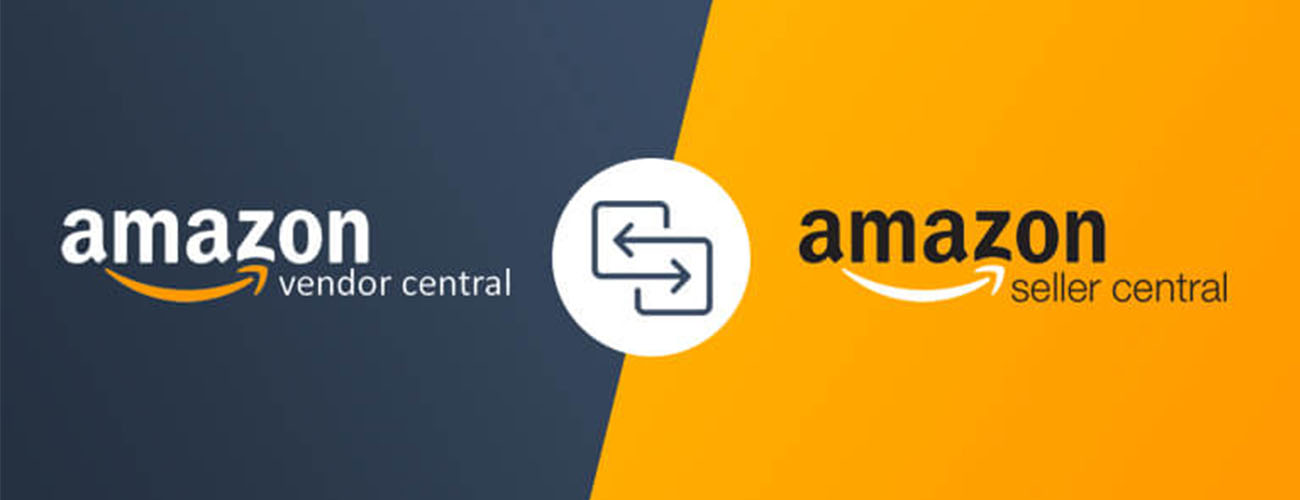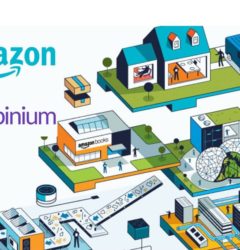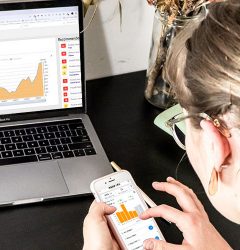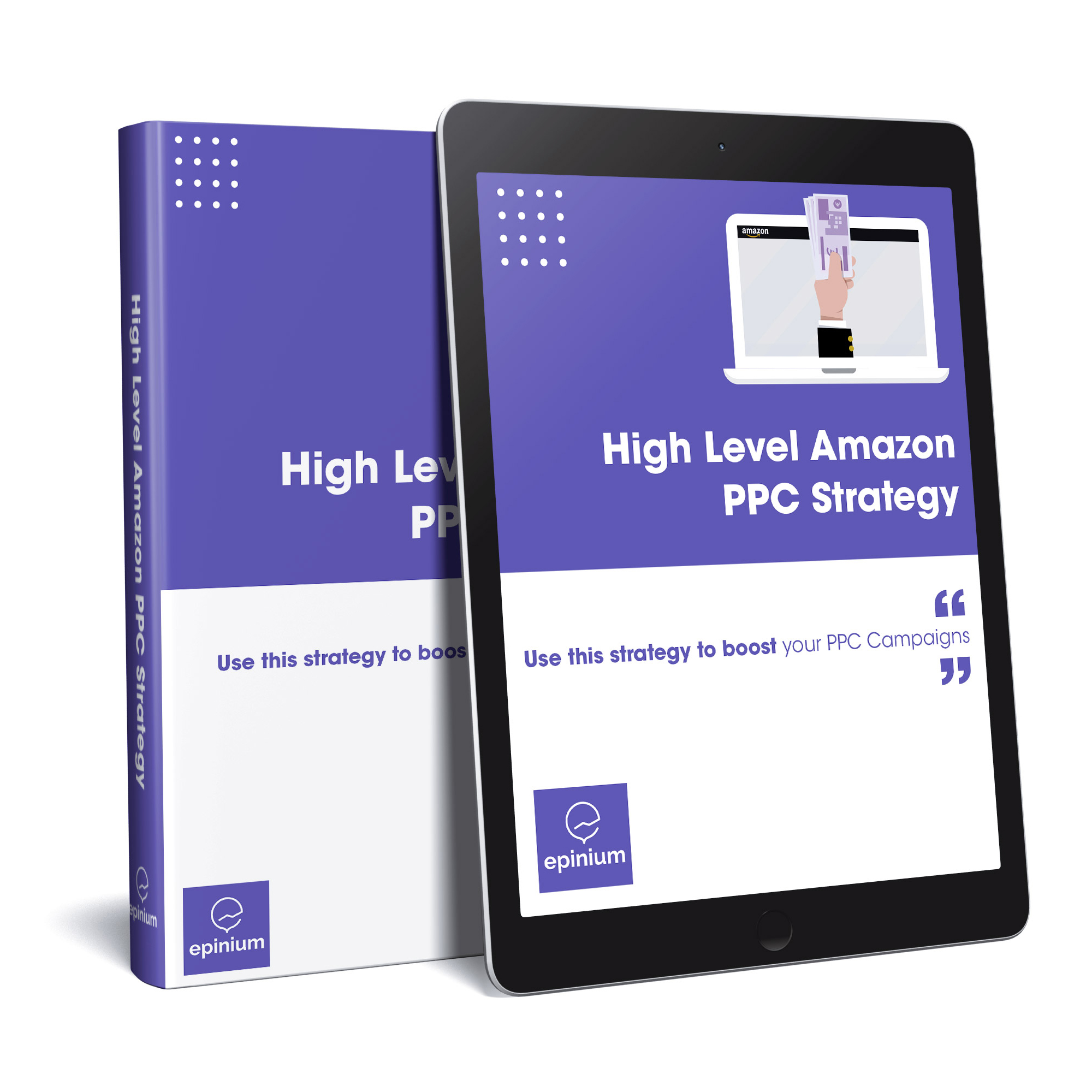There are two ways to earn money with Amazon. We cannot only act as independent sellers through Seller Central. You can also choose to sell your products to Amazon directly and have them take care of selling the products for you (Amazon vendor central).
That is the difference between being “Vendor” or “Seller” of Amazon. Depending on the option, each will have its own resource platform.
Let’s take a look at the key differences between each of the options below.
Amazon Seller Central vs. Amazon Vendor Central
The main difference between Amazon Seller Central and Vendor Central is who sells the product to the end customer.
At Vendor Central you sell the products to buyers who work at Amazon, and they are the ones who then resell the products to Amazon users. Here you act as a provider.
In Seller Central, you are the one who manages the inventory, establishes the sale price and you are in charge of making the sale. Here you act as a seller.
Vendor Central, Pros and Cons
In order to sell through Vendor Central, Amazon vendors can only join at the invitation of the corporate team. Once inside, the products will be listed as “sold by Amazon”. This probably offers a confidence boost to buyers.
Selling through Vendor Central avoids the commissions that we normally have in Seller Central, as an example would be the sales commission, which depends on the product category, shipping, which depends on the size of the box or simply taking into account that a program in Seller Central costs € 39 per month. Vendor Central manages shipping and gift wrapping.
Still, despite its obvious advantages, Vendor Central is not without its drawbacks.
When buying products, Amazon usually does it in large volumes. This makes you a Vendor and will mean that you will be an Amazon supplier and that you must offer the wholesale price. The retail price, in this case, is completely in the hands of Amazon and it is normal that you do not get the expected profit margins on certain products. There are no minimum price policies and for this reason a supplier could even lose money if the price falls too low.
Being an Amazon supplier also causes major logistical concerns. Amazon can become demanding when it comes to inventory and order fulfillment. New users often have certain difficulties in meeting these levels of demand.
It can be difficult to launch products only using the Vendor Central platform since Amazon has no incentive to buy products for which the potential is not yet known. In other words, new products.
Amazon does not have the knowledge of how the sales of this new product will be made. It could be a highly successful product in the future, but it doesn’t have to be, and Amazon probably won’t place purchase orders on an item without a prior history.
Seller Central, Pros and Cons
At Seller Central, sellers have to do more work and pay more commissions, but they have a little more control than Vendor Central does. You will have to pay various sales commissions, manage prices, carry out promotions, manage inventory, personally communicate with customers, and send the product unless we are using FBA. In the latter case, Amazon would take care of the shipments.
Using Seller Central also gives you access to detailed analytics that will help increase sales and better control returns by directly avoiding unhappy customers.
In addition, price control allows you to take advantage of those periods of high demand, offer offers and other promotions to stay competitive
Sellers typically see fewer sales than vendors. This is because sellers do not have the “sold by Amazon” label.
Although for many sellers, the flexibility offered by Seller Central and margin gains on products more than offset declining sales.
Can I be an Amazon supplier and a seller at the same time?
Yes. If we look at the photos previously published, we can see how the same brand supplies products to Amazon and on the other hand sells products on Amazon. What this means is that this brand has an account in both Seller Central and Vendor central and they themselves choose which products to distribute and sell on each of the platforms. It is also true that on some occasions we have been able to observe that although your case is not wanting to sell to Amazon, they can go to one of your distributors to buy the products from them. In that case, you could play with the margins to compete for the Buy Box and have an advantage in addition to selling under your own brand.
Major takeaways
Both Seller Central and Vendor Central have unique advantages for each modality. For this reason, the one that is most suitable for your brand will depend on the resources you have as a seller, the rates you are willing to pay, and the level of control desired.
We hope you liked our post!
If you have any questions, feel free to ask in the comments section below!







32 Comments
wedding ring couple diamond
It’s amazing designed for me to have a web page, which is
valuable in support of my knowledge. thanks admin
idn poker
I like the valuable information you provide on your articles.
I’ll bookmark your blog and check once more right here frequently.
I am reasonably certain I’ll be told lots of new stuff proper here!
Best of luck for the next!
vivo slot
I’ve read several just right stuff here. Certainly worth bookmarking
for revisiting. I surprise how so much effort you put to
create one of these excellent informative site.
poker
Its like you learn my thoughts! You seem to understand so much approximately this, like you wrote the ebook in it or something.
I think that you just can do with some % to force the message house a bit, but other than that,
that is wonderful blog. A fantastic read.
I will definitely be back.
vivoslot
I used to be able to find good info from your content.
mpo slot
Generally I don’t learn post on blogs, however I would like to say that
this write-up very pressured me to check out and do it!
Your writing taste has been amazed me. Thanks, very great article.
judi online
Good blog you’ve got here.. It’s difficult to find good
quality writing like yours these days. I seriously appreciate individuals
like you! Take care!!
vivo slot
This site was… how do I say it? Relevant!! Finally I have found something that helped
me. Kudos!
sv388
Hi there, all is going fine here and ofcourse every one is sharing information, that’s
genuinely excellent, keep up writing.
sv 388
Great website. A lot of useful info here. I am sending
it to some pals ans also sharing in delicious.
And obviously, thank you in your effort!
situs judi online
Thanks very nice blog!
Www.Drugoffice.Gov.hk
Great article, exactly what I needed.
오피
Hi there, just became aware of your blog through Google, and found that it is
really informative. I am gonna watch out for brussels. I’ll appreciate if you continue
this in future. Lots of people will be benefited from your writing.
Cheers!
서울오피
Excellent pieces. Keep posting such kind of info
on your site. Im really impressed by your blog.
Hello there, You have performed an excellent job.
I’ll definitely digg it and in my view suggest to my friends.
I am sure they will be benefited from this web site.
천안마사지
It’s remarkable to pay a visit this web site and reading the views of all friends regarding this article, while I am
also eager of getting knowledge.
아산출장마사지
I like the valuable information you provide in your articles.
I will bookmark your weblog and check again here
regularly. I’m quite sure I’ll learn many new stuff right here!
Good luck for the next!
oo오피스걸
There’s definately a lot to learn about this topic.
I like all the points you’ve made.
good news
Hello to all, the contents present at this web page
are genuinely amazing for people knowledge, well, keep up the nice work fellows.
오피스걸
You really make it appear really easy together with your presentation however I find this topic to
be really something that I think I would by no
means understand. It sort of feels too complex and extremely extensive
for me. I am taking a look ahead in your subsequent post, I’ll attempt to get the cling of it!
Проститутки Питера
What’s up, the whole thing is going fine here and ofcourse every one is sharing data, that’s
in fact excellent, keep up writing.
June
Hi, just wanted to mention, I liked this post. It was funny.
Keep on posting!
아산출장마사지
Hello there, You’ve done an incredible job. I’ll definitely digg
it and personally suggest to my friends. I’m confident they will be
benefited from this site.
pragmatic
Just want to say your article is as astonishing. The clearness in your
publish is just spectacular and that i can think you are a professional on this subject.
Fine along with your permission let me to grasp your feed to stay up to
date with drawing close post. Thanks 1,000,000 and please keep up the
rewarding work.
joker123
Hi there to all, how is everything, I think every
one is getting more from this web page, and your views are nice in support of new visitors.
나주출장마사지
whoah this blog is excellent i like reading your posts.
Keep up the good work! You understand, a lot of people are looking around for this information,
you can help them greatly.
surfsmart vpn
These are really enormous ideas in about blogging.
You have touched some pleasant points here. Any way keep
up wrinting.
출장홈타이
I think this is one of the so much significant information for
me. And i’m glad reading your article. However should statement on some basic
issues, The website taste is perfect, the articles is actually great :
D. Good process, cheers
Cartersville Plumbing
excellent submit, very informative. I ponder why
the opposite specialists of this sector do not notice this.
You should proceed your writing. I’m confident, you have a great
readers’ base already!
홈타이
Good web site you have here.. It’s hard to find good quality writing like yours these days.
I really appreciate individuals like you!
Take care!!
출장홈타이
There is definately a lot to find out about this issue. I love all of the points
you’ve made.
출장홈타이
Wow, amazing blog format! How lengthy have you ever been running a
blog for? you made blogging glance easy. The overall look
of your web site is wonderful, let alone the content material!
홈케어
Keep on working, great job!